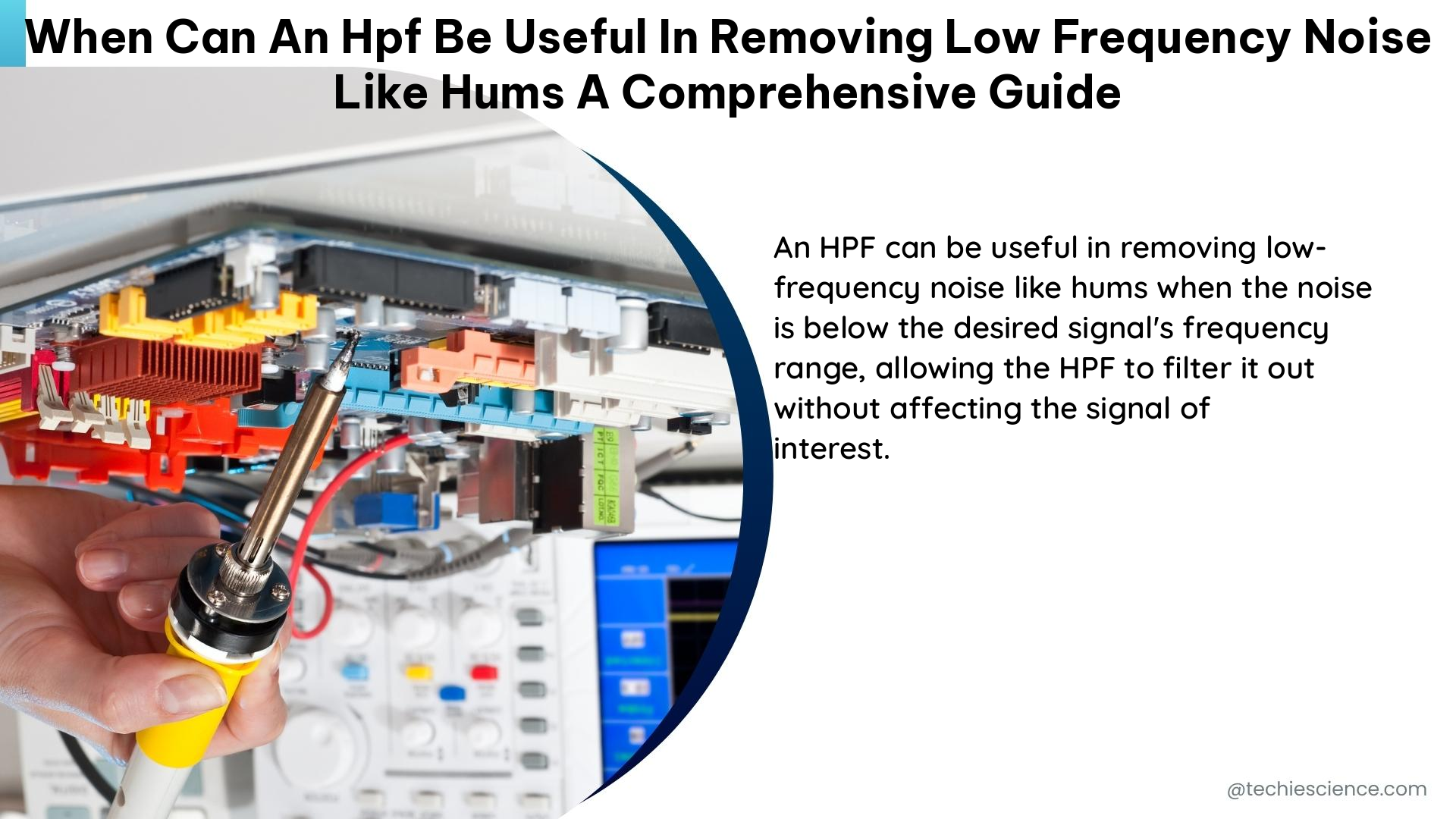A High Pass Filter (HPF) is a powerful tool for audio engineers and musicians to remove unwanted low-frequency noise, such as hums, rumbles, and other interference, while preserving the desired audio signal. This comprehensive guide will delve into the technical details, practical applications, and numerical examples of using an HPF to tackle low-frequency noise challenges.
When to Use an HPF
An HPF can be particularly useful in the following scenarios where low-frequency noise is a concern:
Eliminating Hums and Ground Loops
Hums caused by ground loops or electrical interference often occur in the lower frequency range, typically around 50-60 Hz. An HPF can be an effective solution to remove these unwanted frequencies, improving the overall audio quality.
Cleaning Up Instrument Tones
In amplified or electric string instruments, low-frequency noise, such as bow noise or thumps from bow changes, can be reduced using an HPF. This helps to create a cleaner and more defined tone.
Improving Vocal Recordings
Plosives (breath blasts from Ps and Bs) can be mitigated using an HPF, as it reduces the low-frequency energy that causes these disturbances, leading to a more polished vocal recording.
Lowering the Noise Floor
High pass filters can help reduce the impact of ambient noise, such as traffic, HVAC systems, or footsteps, by attenuating low-frequency sounds, effectively lowering the overall noise floor.
Technical Specifications and Theorem

An HPF can be defined using two main parameters:
- Frequency (F): The cutoff frequency where the filter begins to roll off the low-frequency signals. This frequency is measured in Hertz (Hz).
- Slope (S): The rate at which the filter attenuates the low-frequency signals, measured in decibels per octave (dB/octave).
The most common HPF types are:
| HPF Type | Characteristics |
|---|---|
| Butterworth HPF | Offers a maximally flat frequency response in the passband but a more gradual roll-off in the stopband. |
| Chebyshev HPF | Provides a steeper roll-off in the stopband but with a ripple in the passband. |
| Bessel HPF | Offers a more linear phase response, which can be beneficial for preserving the transient response of signals. |
The formula for a first-order HPF can be represented as:
(H(s) = \frac{s}{s + \omega_c})
Where s is the complex frequency and ω_c is the cutoff frequency in rad/s.
Hands-on Details and Numerical Problems
When using an HPF to remove low-frequency noise like hums, consider the following steps:
-
Identify the Noise Frequency: Use a spectrum analyzer or other frequency analysis tools to determine the frequency of the hum or noise. This will help you choose the appropriate cutoff frequency.
-
Choose the Cutoff Frequency: Set the HPF cutoff frequency slightly above the identified noise frequency. For example, if the noise is at 60 Hz, set the HPF cutoff to around 80-100 Hz.
-
Adjust the Slope: A steeper slope (e.g., 12 or 24 dB/octave) will provide a more aggressive roll-off but may affect the signal’s tonal balance. Experiment with different slopes to find the best balance between noise reduction and signal integrity.
-
Test and Refine: Always test the HPF settings on a small section of the audio signal before applying it to the entire track. Adjust the cutoff frequency and slope as needed to achieve the desired noise reduction without compromising the signal quality.
Here are some example values and data points for using an HPF to remove low-frequency noise like hums:
- Cutoff Frequency: 80-100 Hz for a 60 Hz hum
- Slope: 6, 12, or 24 dB/octave
- Frequency Response: Butterworth, Chebyshev, or Bessel
For instance, if you have a 60 Hz hum in your audio signal, you could set the HPF cutoff frequency to 80 Hz with a 12 dB/octave slope using a Butterworth filter. This configuration would effectively attenuate the low-frequency hum while preserving the desired audio content.
Remember, the optimal settings may vary depending on the specific characteristics of your audio signal and the noise you’re trying to remove. Experimentation and testing are crucial to finding the right balance.
Conclusion
An HPF is a versatile and powerful tool for removing low-frequency noise like hums in various audio processing applications. By understanding the technical specifications, choosing appropriate cutoff frequencies and slopes, and testing the settings on your specific signal, you can effectively reduce unwanted low-frequency noise while preserving the desired audio content.
References
- 6 Ways to Use a High Pass Filter When Mixing
- Parameters for High Pass Filter and Noise Remover
- The Basics of Using High Pass Filter in Your Mix

The lambdageeks.com Core SME Team is a group of experienced subject matter experts from diverse scientific and technical fields including Physics, Chemistry, Technology,Electronics & Electrical Engineering, Automotive, Mechanical Engineering. Our team collaborates to create high-quality, well-researched articles on a wide range of science and technology topics for the lambdageeks.com website.
All Our Senior SME are having more than 7 Years of experience in the respective fields . They are either Working Industry Professionals or assocaited With different Universities. Refer Our Authors Page to get to know About our Core SMEs.